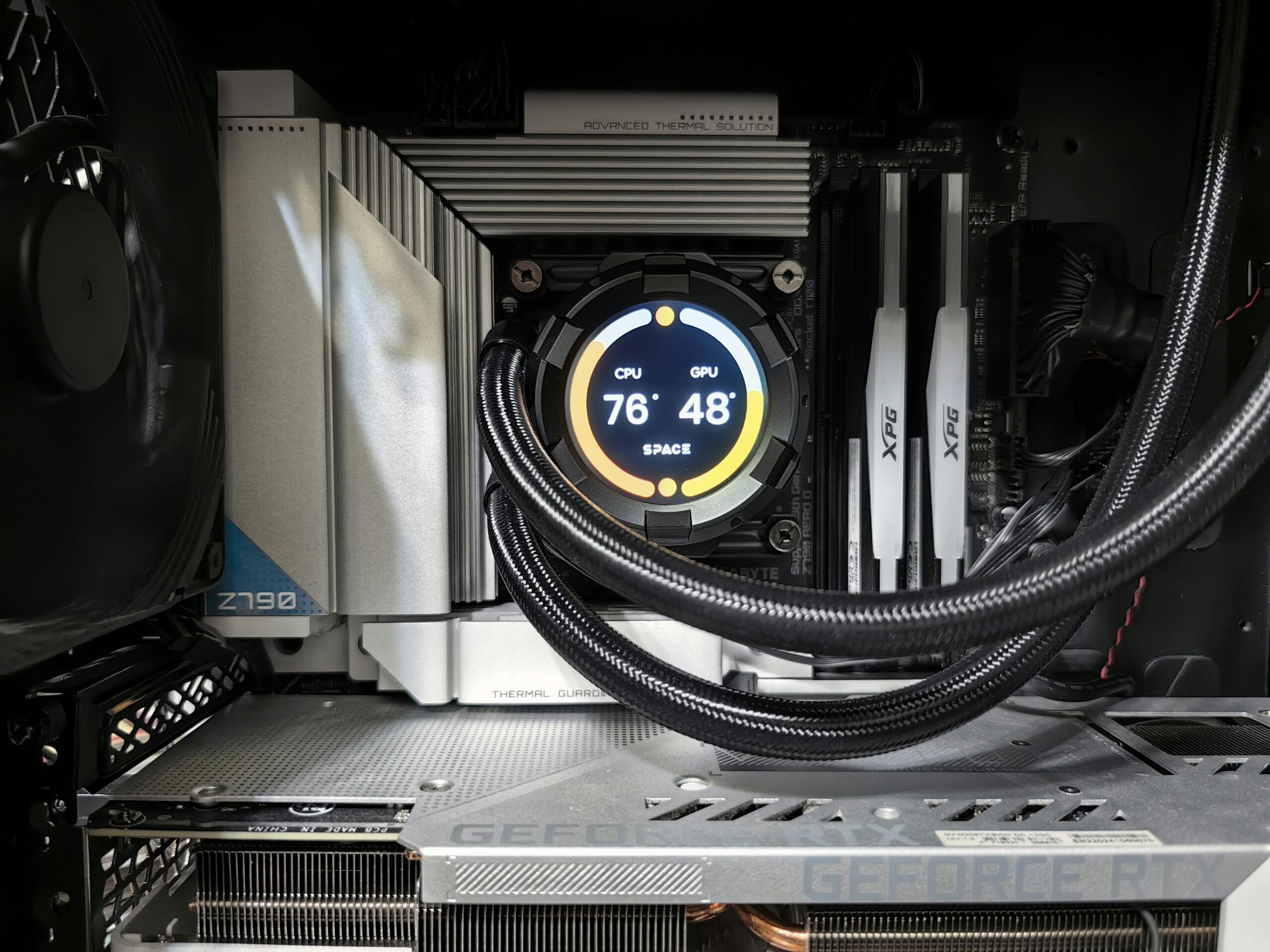Are you tired of experiencing unexpected crashes while overclocking your Windows 11 GPU? You’re not alone! Many gamers and content creators are seeking ways to enhance their system’s performance through GPU overclocking, only to face frustrating stability issues. In this article, we will delve into effective strategies to resolve Windows 11 GPU overclock crashes, ensuring you achieve that coveted smooth performance without sacrificing reliability.
Overclocking can significantly boost your graphics card’s performance, but it also comes with risks, particularly for users running Windows 11. Crashes during intense gaming sessions or demanding applications can hinder your productivity and ruin your gaming experience. So, how can you prevent these annoying disruptions? In the following sections, we’ll explore essential tips and tricks that will help you maintain a stable overclock while maximizing your GPU’s potential.
Whether you’re a seasoned overclocker or just starting out, understanding the nuances of Windows 11 GPU overclock settings is crucial. From monitoring temperatures to adjusting voltage settings, we’ll guide you through the process of optimizing your system. So, are you ready to unlock the full power of your GPU without the fear of crashes? Let’s dive in and transform your Windows 11 experience into a seamless adventure!
Top 7 Proven Strategies to Prevent GPU Overclock Crashes on Windows 11

In the ever-evolving world of gaming and graphic design, GPU overclocking often helps users unleash their hardware’s true potential. Yet, if you’re running Windows 11, you might faced some nasty crashes due to overclocking. This is why knowing the top 7 proven strategies to prevent GPU overclock crashes on Windows 11 is crucial for anyone wanting a smoother performance.
1. Monitor Your Temperatures
Keeping an eye on your GPU’s temperature is important. Most GPUs can handle a certain level of heat, but if the temperature gets too high, crashes could happens. Use software like MSI Afterburner or HWMonitor to track the temperatures. Ideally, you want to keep it below 85°C.
2. Gradual Overclocking
Instead of jumping straight into extreme settings, start with small increments. Increase your GPU clock speed by 10–20 MHz at a time. After each adjustment, run a stress test for at least 15 minutes. If everything runs fine, you can continue, but if you notice any instability, drop back to the last stable settings.
3. Adjust Power Settings
Windows 11 has power settings that can influence the performance of your GPU. Go to Control Panel, then Power Options, and set it to “High performance.” This prevents your system from throttling performance to save energy, which can cause crashes during intensive tasks.
4. Update Drivers Regularly
Outdated drivers can lead to issues with overclocking. Always check for the latest GPU drivers from your manufacturer’s website; NVIDIA and AMD often release updates that improve performance and stability. If you are using GeForce Experience or Radeon Software, enable automatic updates to keep everything fresh.
5. Test Stability with Benchmarking Software
Using benchmarking tools is crucial for stability testing. Programs like 3DMark or Unigine Heaven help stress your GPU under load conditions. This will reveal whether your current overclock settings are stable. If crashes happen during testing, revert to the previous settings.
6. Increase the GPU Voltage Cautiously
Sometimes, GPUs need more voltage to maintain stability at higher clock speeds. However, be careful! Increasing voltage too much can lead to overheating or damage. A slight increase of 0.025V can make a difference but always monitor the temperature closely when you do this.
7. Clean Your System Regularly
Dust and debris can obstruct airflow and cause overheating, leading to crashes. Regularly clean your PC’s interior to ensure proper cooling. Use compressed air to blow out dust from fans and heatsinks. A clean system runs smoother and is less likely to crash during intense tasks.
Quick Tips for Smooth Performance
- Always back up important files before making changes to your GPU settings.
- If crashes persist, consider reverting your GPU to factory settings.
- Look into community forums for specific advice related to your GPU model.
- Don’t forget about your power supply; ensure it can handle the extra load from overclocking.
By following these strategies, you can significantly reduce the chances of experiencing GPU overclock crashes on Windows 11. Remember, overclocking is a balancing act, and it’s always better to prioritize stability over performance. With the right precautions and adjustments, you can enjoy your graphics-heavy applications without interruptions. Keeping your hardware optimized will leads to a better overall experience, whether you’re gaming or working on creative projects.
Is Your Windows 11 GPU Overclock Causing Crashes? Here’s How to Diagnose the Issue

Is your Windows 11 GPU overclock causing crashes? You’re not alone in this struggle. Many gamers and computer enthusiasts have faced the consequences of pushing their graphics cards beyond manufacturer limits. Overclocking your GPU can lead to better performance, but it can also make your system unstable. This article will help you diagnose the issue and provide tips for smooth performance.
Understanding GPU Overclocking
Overclocking is when you run your GPU at a higher clock speed than the manufacturer intended. This can lead to increased frame rates and better graphics performance in demanding applications. But the downside of this practice is that it can lead to overheating or instability, especially if cooling solutions are inadequate. Historically, GPU overclocking became popular in the mid-2000s when gamers sought every bit of performance to enjoy the latest titles.
Signs Your GPU Overclock is Causing Crashes
Identifying the signs of GPU-related crashes is crucial. Here’s what to look for:
- Frequent system crashes or blue screens.
- Artifacts like strange colors or shapes on the screen.
- Unexpected reboots during games or graphic-intensive applications.
- Performance drops or stuttering even in less demanding programs.
If you notice any of these symptoms, your overclocking settings might be the culprit.
Diagnosing the Issue
To diagnose if your overclock is causing problems, you can use various tools and methods:
-
Stress Testing: Programs like MSI Afterburner or FurMark can help you stress test your GPU. Monitor for temperature spikes and system stability during tests.
-
Event Viewer: Windows 11 has an Event Viewer that logs system events. Look for critical errors related to your GPU and see if they coincide with your crashes.
-
Uninstall Overclocking Software: If you’re using third-party software to overclock, try uninstalling it temporarily to see if the issue resolves.
-
Reset to Default Settings: Revert your GPU settings back to factory defaults. This can quickly tell you if the overclock was the issue.
Tips for Smooth Performance
If you determine that overclocking is causing issues, here’s how to resolve Windows 11 GPU overclock crash:
-
Gradual Overclocking: Instead of jumping to high settings, increase clocks in small increments. Test stability after each change.
-
Improve Cooling: Ensure your GPU has adequate cooling. Clean dust from fans and consider upgrading your cooling solution if necessary.
-
Monitor Temperatures: Keep an eye on your GPU temperatures using monitoring tools. Ideally, your GPU should stay below 85°C under load.
-
Increase Power Limit: Sometimes, increasing the power limit can stabilize an overclock. Just be cautious of the temperatures.
-
Update Drivers: Always ensure your GPU drivers are up to date. New drivers can enhance compatibility and performance.
Final Thoughts
Overclocking your GPU can be a great way to boost performance in Windows 11, but it comes with risks. By understanding the signs of crashes and employing the right diagnostic methods, you can identify and fix issues that arise from overclocking. Remember, patience is key. Don’t rush the process, and always prioritize stability over performance. With the right approach, you can enjoy smooth gameplay and graphics without crashes. Take your time, monitor your system, and enjoy the enhanced performance without the headaches.
5 Essential Tools for Monitoring GPU Performance and Avoiding Crashes in Windows 11

When you’re gaming or running resource-heavy applications on Windows 11, having a reliable GPU is super important. But what happens when your system starts crashing due to GPU overclocking? Well, that’s where monitoring tools come in. They are essential for maintaining GPU performance and preventing those annoying crashes. Here’s a look at 5 essential tools for monitoring GPU performance and avoiding crashes in Windows 11, plus some tips on how to resolve GPU overclock crash issues.
1. MSI Afterburner
This tool is a classic in the gaming community. MSI Afterburner allows you to monitor and tweak GPU settings in real-time. You can see your GPU’s temperature, usage, and clock speeds right on your screen. It also provides options for overclocking. But be careful! Overclocking can lead to instability, so you should monitor those temperatures closely. If you notice temperatures rising too high, dial back your overclock settings.
2. GPU-Z
GPU-Z is like a little treasure chest of information about your graphics card. This lightweight utility provides detailed specs and real-time monitoring of your GPU. It shows you everything from memory type to the voltage being used. It’s super helpful in identifying potential issues before they turn into crashes. Plus, it’s free and easy to use, making it a must-have for anyone serious about GPU performance.
3. HWMonitor
HWMonitor is a comprehensive tool that tracks not just your GPU, but also your CPU and other components. It’s great for understanding how your system behaves under load. If your GPU starts to overheat, this tool will let you know before it causes a crash. You can also see power consumption, which is crucial if you’re pushing your GPU to its limits. Just remember to take action if the readings show your GPU running too hot.
4. FurMark
FurMark is mainly a stress-testing tool, but it can be a lifesaver when diagnosing GPU issues. Running FurMark can help you check the stability of your overclocked GPU. If your system crashes or shows artifacts during the test, that’s a sign that your overclock settings might be too aggressive. It’s not just about monitoring; it’s about testing stability under extreme conditions.
5. RivaTuner Statistics Server (RTSS)
RTSS goes hand in hand with MSI Afterburner. It helps you to display frames per second (FPS) and other performance metrics in real-time. This can help you understand how your GPU performs during different scenarios. If you notice a drop in FPS or stuttering, it might be an indicator that your GPU is struggling, prompting you to reconsider your overclock settings.
Tips for Smooth Performance and Resolving Crashes
- Gradual Overclocking: Increase your GPU clock speeds gradually and test for stability using tools like FurMark.
- Keep Drivers Updated: Always ensure that your GPU drivers are up to date to avoid compatibility issues.
- Monitor Temperatures: Use tools like HWMonitor to keep an eye on temperatures. Ideally, keep your GPU temperature below 80°C during heavy usage.
- Check Power Supply: A failing power supply can cause crashes, especially when overclocking. Make sure your PSU is sufficient for your GPU’s needs.
- Restore Factory Settings: If crashes persist, consider reverting your overclock settings back to factory defaults and then re-evaluate performance.
Maintaining a stable GPU performance in Windows 11 is crucial for any gamer or professional user. By using these essential tools and following the tips provided, you can mitigate the risk of GPU overclock crashes. Keeping a watchful eye on your GPU’s performance allows for smoother gameplay and a more enjoyable computing experience.
Why Overclocking Your GPU on Windows 11 Can Lead to Crashes—And How to Fix It

Overclocking your GPU on Windows 11 can seem like a good way to boost performance, but it sometimes leads to crashes and other frustrating issues. Many users have tried to squeeze every bit of power from their graphics cards, only to end up with an unstable system. So, why does this happen, and how can you fix it? Let’s dive into these questions and explore the world of GPU overclocking, especially in the context of Windows 11.
Understanding Overclocking and Its Risks
Overclocking is when you increase the clock speed of your GPU beyond its manufacturer’s specifications. This process can enhance performance in gaming and demanding applications, but it also come with risks. The most common issues include overheating, instability, and crashes. Overclocking can cause your GPU to draw more power, which might not be manageable for your system’s power supply, leading to crashes or even hardware damage.
- Common symptoms of GPU overclock crashes:
- Random system restarts
- Blue screen errors (BSOD)
- Artifacts or graphic glitches during gameplay
- Performance drops instead of gains
Why Windows 11 Makes a Difference
Windows 11 introduces several changes in how the operating system interacts with hardware, including GPUs. Some users report that overclocked GPUs behave differently in Windows 11 compared to previous versions. This could be due to various factors, such as:
- Improved graphics drivers that may not fully support overclocked settings.
- A shift in power management that doesn’t favor overclocking.
- Increased background processes that might strain the GPU further.
Tips for Resolving Windows 11 GPU Overclock Crashes
If you’re facing crashes after overclocking in Windows 11, there’s several strategies you can try to stabilize your system. Below are some practical tips that could help you resolve these issues:
-
Reset to Default Settings: If your system is unstable, reverting to the default clock settings is a good starting point. This can often resolve immediate crashing issues.
-
Monitor Temperatures: Use software like MSI Afterburner or HWMonitor to keep an eye on GPU temperatures. If it gets too hot, consider improving your cooling solutions or reducing your overclock.
-
Gradual Overclocking: Instead of a massive increase, try overclocking in small increments. This allows you to find a stable setting without pushing your GPU too far.
-
Stress Testing: Use tools like 3DMark or FurMark to stress test your GPU after making adjustments. If it crashes during testing, dial back your overclock.
-
Update Drivers: Ensure your GPU drivers are up to date. Sometimes newer drivers can fix stability issues related to overclocking.
Additional Considerations
-
Power Supply Unit (PSU): Make sure your PSU is capable of handling the increased power draw from an overclocked GPU. A weak PSU might lead to crashes under load.
-
Compatibility: Not all GPUs are designed to be overclocked. Check if your model is known for good overclocking capabilities.
-
System Compatibility: Some systems may not support overclocking due to motherboard limitations or BIOS settings.
Quick Checklist for Smooth Performance
- Reset GPU settings if crashes occur.
- Monitor temperatures regularly.
- Incrementally increase GPU clock speeds.
- Conduct stress tests after adjustments.
- Keep your drivers up to date.
- Ensure your PSU is sufficient for your system.
Overclocking can enhance your gaming experience on Windows 11, but it’s important to approach it carefully. Crashes can be frustrating, but by following the tips above, you can resolve most issues related to GPU overclocking. Remember to stay patient and methodical, and your overclocking journey might just lead to the performance improvements you’ve been looking for.
Step-by-Step Guide: Safely Overclock Your GPU in Windows 11 Without Crashing

Overclocking your GPU in Windows 11 is a way to boost performance, letting you enjoy smoother gaming and faster rendering. But, if not done right, it can lead to crashes, which is definitely not what you want. This guide here will help you safely overclock your GPU in Windows 11 without running into those annoying crashes.
Why Overclock Your GPU?
Overclocking means running your GPU at a higher speed than intended. This can result in significant performance gains. Benefits of overclocking includes:
- Increased frame rates in games.
- Better performance in rendering tasks.
- Enhanced responsiveness in graphics-heavy applications.
However, it’s important to approach overclocking with caution. If you push your GPU too far, it can result in crashes, instability, or even damage.
Step-by-Step Guide to Overclock Your GPU
-
Gather the Right Tools: Before you start, download GPU monitoring and overclocking software. Popular options includes MSI Afterburner, EVGA Precision X1, and ASUS GPU Tweak II. These tools lets you adjust clock speeds and monitor temperatures.
-
Check Your Current Settings: Open your chosen software to view the current clock speeds and temperature of your GPU. Make sure you know what your default settings are before making changes.
-
Increase the Core Clock: Start by increasing the core clock speed in small increments, usually around 10-20 MHz at a time. After each adjustment, apply the changes and monitor your GPU’s temperature and performance.
-
Test for Stability: After each adjustment, run a benchmark test or play a demanding game to see if the system remains stable. If it crashes or you see artifacts during gameplay, back off the changes.
-
Adjust the Memory Clock: Once you found a stable core clock, you can also increase the memory clock in similar small increments. Again, test for stability after each change.
-
Monitor Temperatures: Keep an eye on the temperature throughout the entire process. Ideally, you want your GPU running below 80 degrees Celsius. If it starts reaching 85 degrees or higher, consider reducing the clock speeds.
-
Fine-Tuning and Final Adjustments: After you’ve found the maximum stable settings for both the core and memory clock, it’s time to do some final tweaks. Adjust fan speeds if necessary to manage temperatures.
Tips for Smooth Performance and Avoid Crashes
-
Increase Power Limit: If your software allows, increase the power limit of your GPU. This gives it more headroom to perform under load without crashing.
-
Use Quality Cooling Solutions: Ensure your GPU is properly cooled. High temperatures are a common cause for crashes when overclocking.
-
Keep Drivers Updated: Make sure your graphics drivers are always up-to-date. Sometimes, performance issues stem from outdated drivers rather than hardware limitations.
-
Restore Default Settings if Needed: If you experience instability after overclocking, revert to original settings. Overclocking should never be a guessing game; always revert if unsure.
Common Issues and Solutions
-
Crashing During Gameplay: If your system crashes, reduce your overclock settings. This is usually a sign that the GPU is being pushed too hard.
-
Artifacts on Screen: Visual glitches or artifacts often indicates an unstable overclock. Lower the clock speeds until the visuals normalize.
-
High Temperatures: If you notice your GPU running too hot, it might be time to invest in better cooling solutions, like additional case fans or a more powerful GPU cooler.
In short, overclocking your GPU in Windows 11 can enhance your gaming and rendering experience, but it does come with some risks. Following this step-by-step guide and implementing the tips provided, you can minimize crashes and enjoy a smoother performance. Remember, patience is key when it comes to overclocking. Just take it slow and monitor everything closely. Happy gaming!
Conclusion
In conclusion, addressing GPU overclocking crashes in Windows 11 requires a systematic approach to ensure optimal performance without compromising stability. We discussed the importance of understanding your hardware’s limits, utilizing software tools for monitoring temperatures and performance, and the significance of gradual adjustments to clock speeds and voltages. It’s essential to keep your drivers updated and to revert to default settings if crashes persist, ensuring a stable gaming or productivity environment. By following these guidelines, you can harness the full potential of your GPU while minimizing the risk of crashes. If you’re experiencing ongoing issues despite these adjustments, consider seeking support from online communities or professional services. Remember, the goal of overclocking is not just to enhance performance but to do so safely and reliably. Take the time to experiment thoughtfully, and enjoy the benefits of a finely tuned system!

